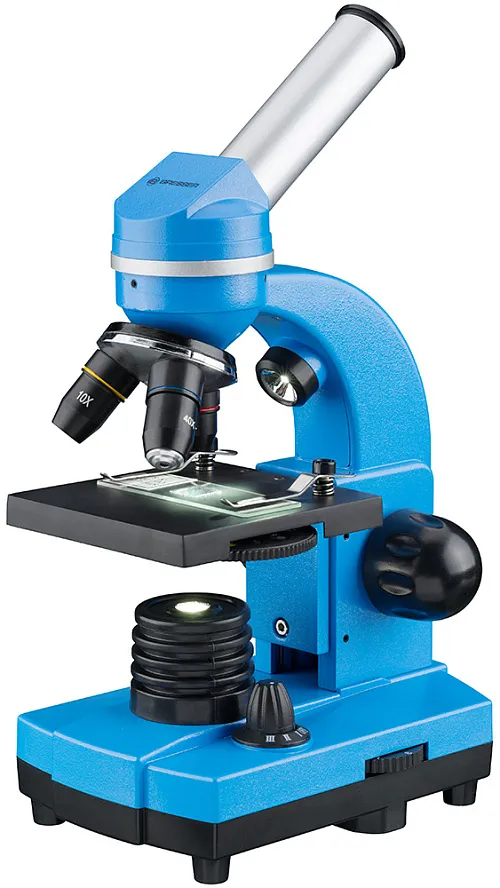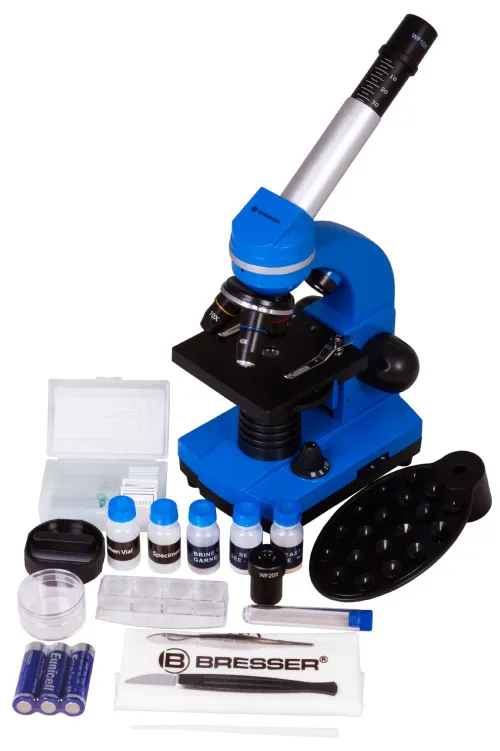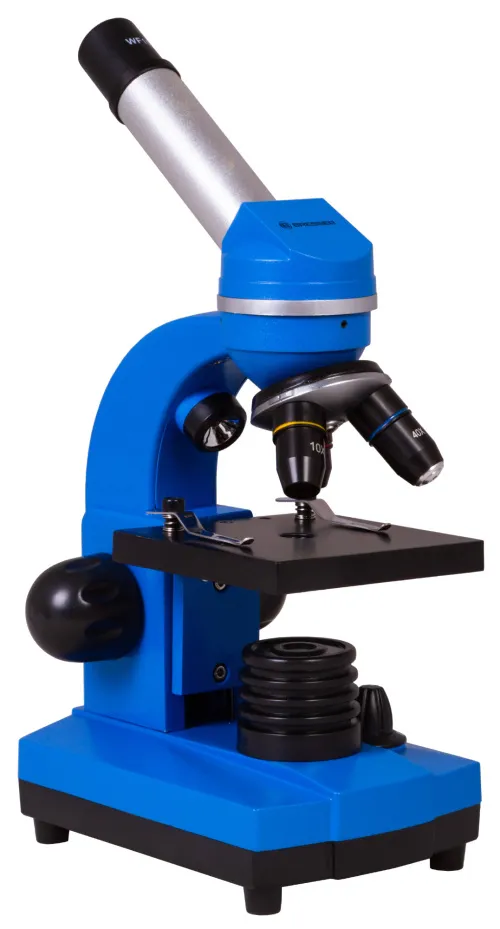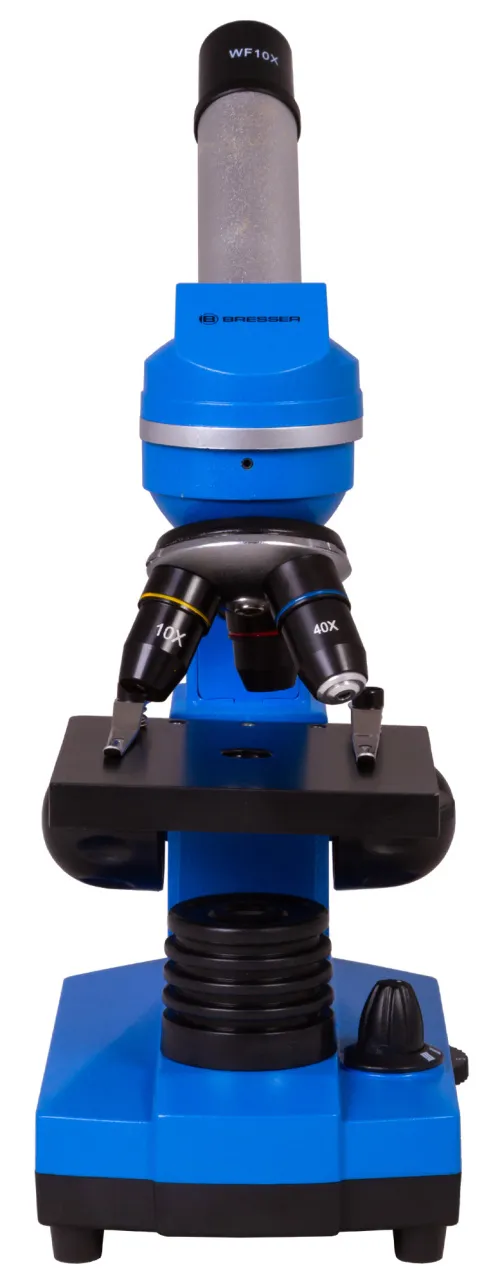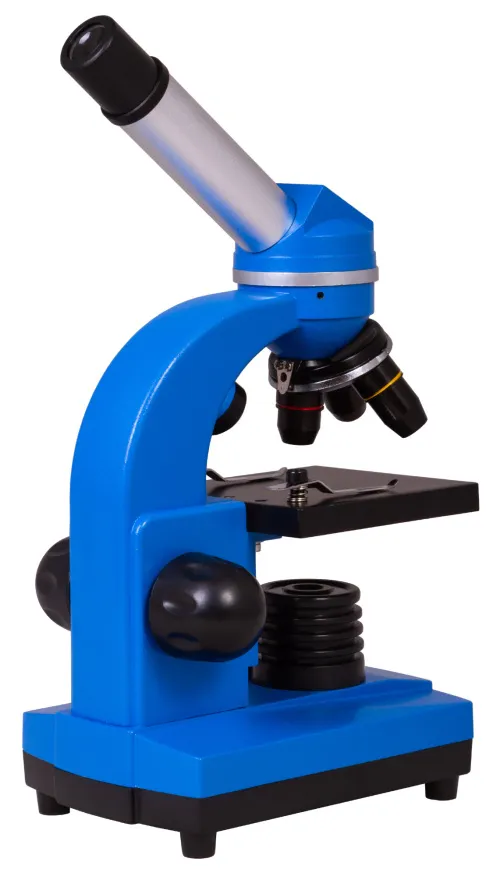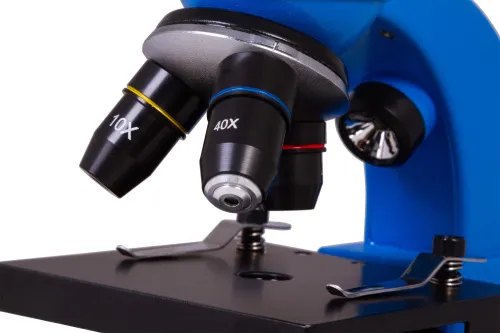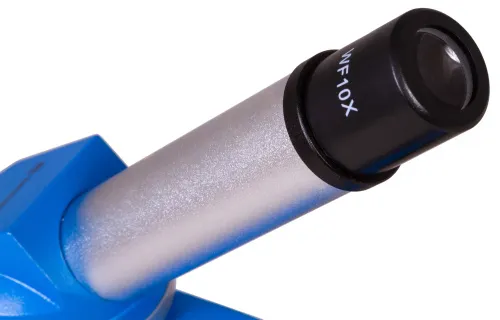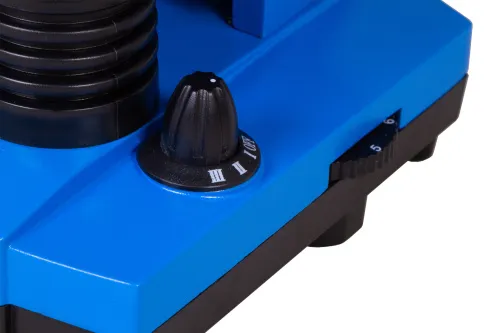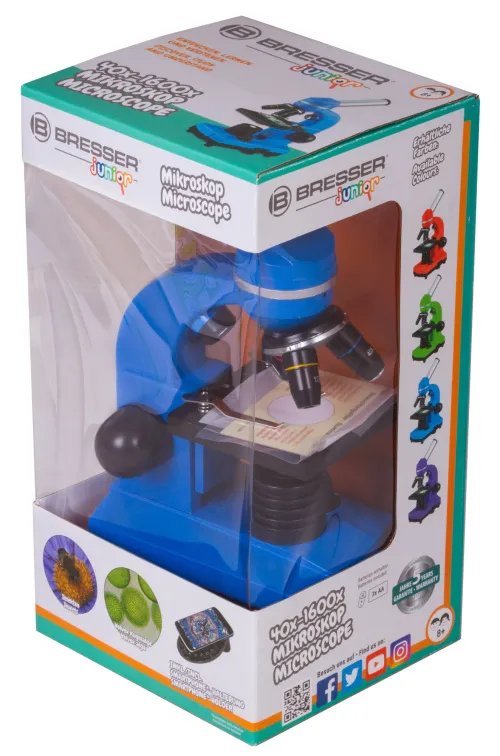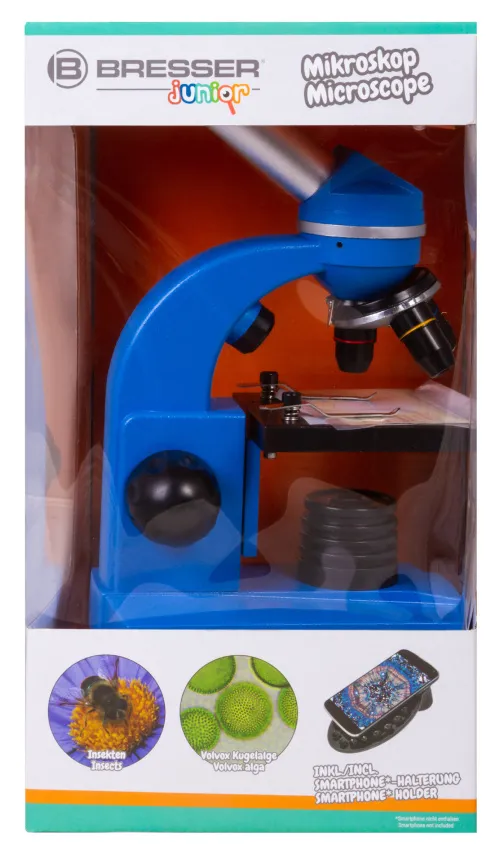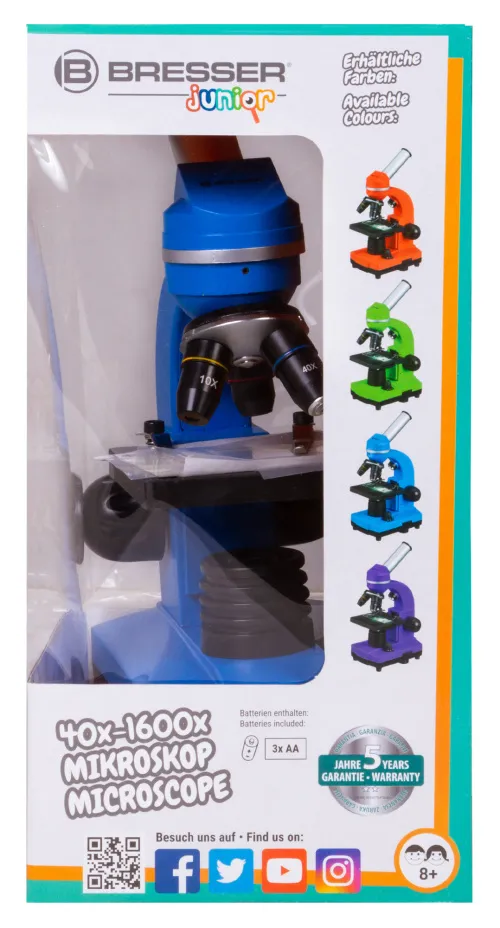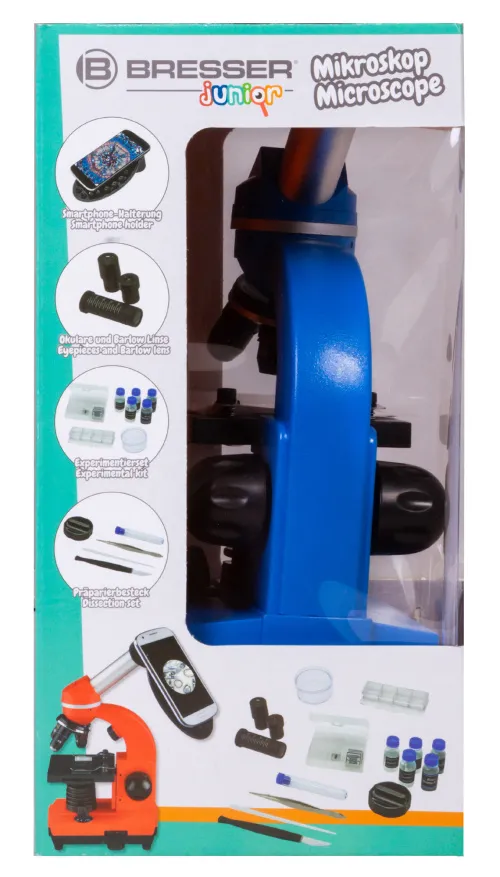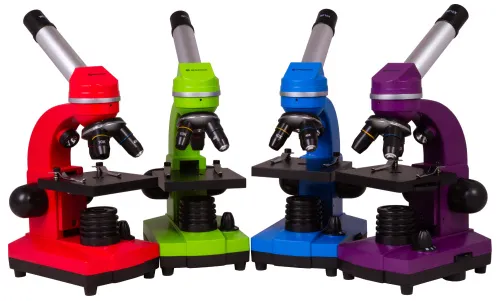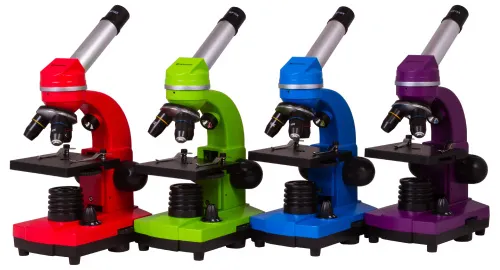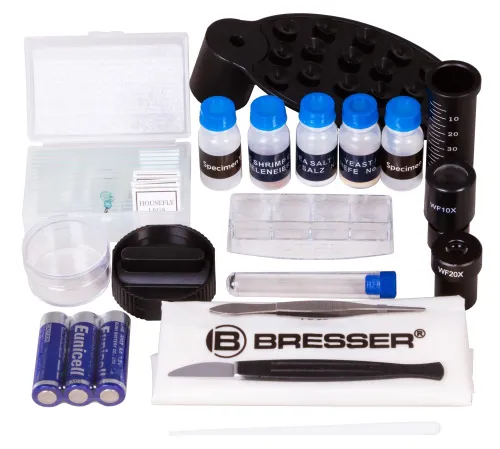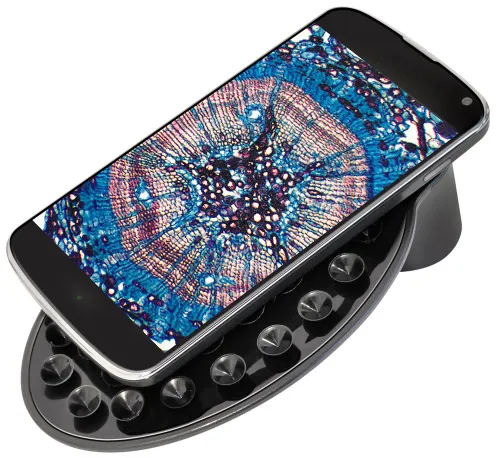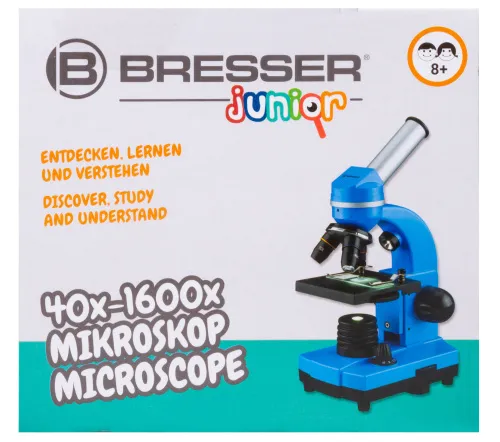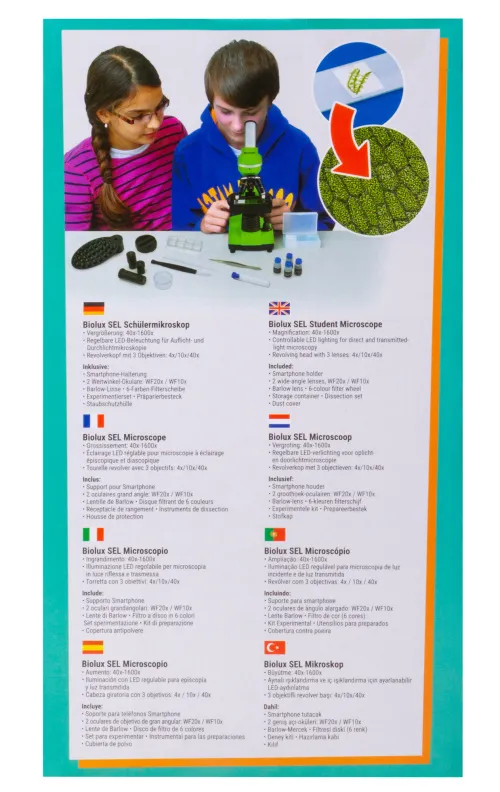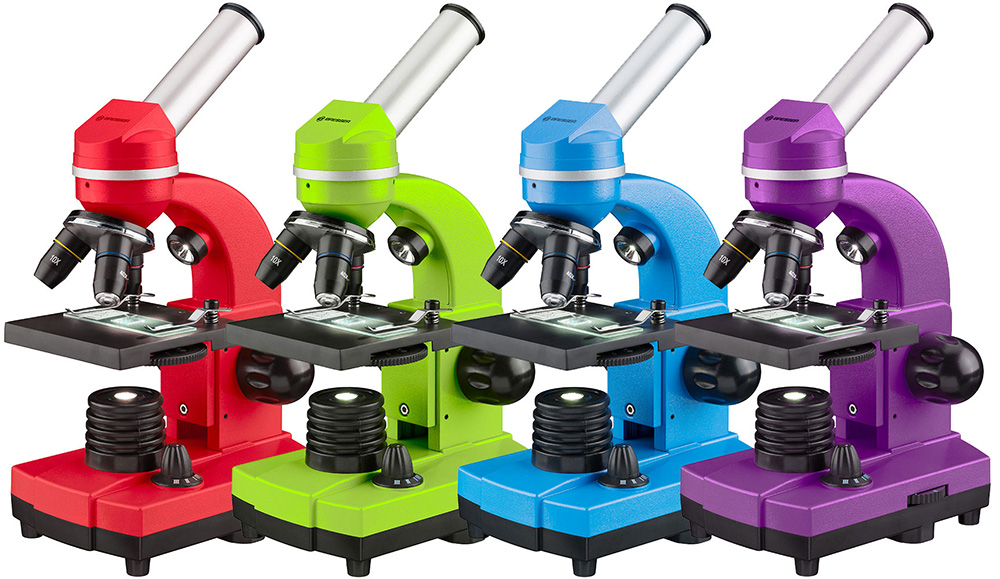Bresser Junior Biolux SEL 40–1600x Microscope
Colorful kid’s microscope. Experiment kit included. Magnification: 40–1600x
| Product ID | 74322 |
| Brand | Bresser GmbH, Germany |
| Warranty | 2 years |
| EAN | 4007922053547 |
| Package size (LxWxH) | 32x17x16 cm |
| Shipping Weight | 1.42 kg |
Bresser Junior Biolux SEL 40–1600x microscope with its extensive range of accessories offers an optimal introduction to microscopy. Unique to these models is the Barlow zoom system in the eyepiece socket: by means of a pull-out additional lens, the magnification can be continuously changed up to 2 times during visual observation, so that together with 3 objectives and 2 interchangeable wide-field eyepieces magnifications of 40x to 1600x can be achieved.
Bresser Junior Biolux SEL 40–1600x microscope has an adjustable LED for transmitted light and incident light incl. filter disc with color filters and apertures. Thus the illumination can always be optimally adjusted. The additional incident light illumination can also be used to microscope objects that are not transparent, such as leaves, small insects and much more. This makes it particularly easy to get started in microscopy!
The power supply is provided by batteries (three pieces type AA), so that microscopic work can also be carried out in the vicinity without a socket. The accessories already include permanent specimens and 5 empty slides and cover glasses for making your own specimens. The set also includes a preparation set consisting of a MicroCut, a knife, a pair of tweezers, a stick and a tube.
The smartphone adapter makes it possible to save the recordings on your smartphone or share them with friends and family!
There is so much exciting to discover in the microcosm, start now with your Bresser student microscope!
Features:
- Biological microscope
- Barlow zoom system
- LED illumination with transmitted and reflected light
- Battery powered
- Extensive range of accessories to get started immediately
- Max. object height with incident light: approx. 4mm (without slides)
The kit includes:
- Microscope
- 2 widefield eyepieces: 10x and 20x
- 3 Lenses: 4x, 10x and 40x
- Barlow lens with up to 2x magnification
- Microscopy utensils
- Yeast, sea salt, shrimp eggs, shrimp hatchery
- Inclusion media (Gum Media)
- Microcut microtoma
- Empty slides and cover glasses
- Permanent preparations
- Batteries (3 pieces AA)
- Smartphone adapter
- Dust cover
- User manual
| Product ID | 74322 |
| Brand | Bresser GmbH, Germany |
| Warranty | 2 years |
| EAN | 4007922053547 |
| Package size (LxWxH) | 32x17x16 cm |
| Shipping Weight | 1.42 kg |
| Type | biological, light/optical |
| Microscope head type | monocular |
| Magnification, x | 40 — 1600 |
| Eyepieces | WF10x, WF20x |
| Objectives | 4x, 10x, 40x |
| Revolving nosepiece | for 3 objectives |
| Stage features | with clips |
| Diaphragm | diaphragm disc |
| Focus | coarse |
| Body | aluminum, plastic |
| Illumination | LED |
| Brightness adjustment | ✓ |
| Power supply | 3 AA/Mignon batteries (included) |
| User level | elementary |
| Assembly and installation difficulty level | extremely simple |
| Application | school/educational |
| Illumination location | dual |
| Research method | bright field |
| Experiment kit included | ✓ |
| Barlow lens | 2x |
| Pouch/case/bag in set | dust cover |
and downloads
We have gathered answers to the most frequently asked questions to help you sort things out
Find out why studying eyes under a microscope is entertaining; how insects’ and arachnids’ eyes differ and what the best way is to observe such an interesting specimen
Read this review to learn how to observe human hair, what different hair looks like under a microscope and what magnification is required for observations
Learn what a numerical aperture is and how to choose a suitable objective lens for your microscope here
Learn what a spider looks like under microscope, when the best time is to take photos of it, how to study it properly at magnification and more interesting facts about observing insects and arachnids
This review for beginner explorers of the micro world introduces you to the optical, illuminating and mechanical parts of a microscope and their functions
Short article about Paramecium caudatum - a microorganism that is interesting to observe through any microscope

